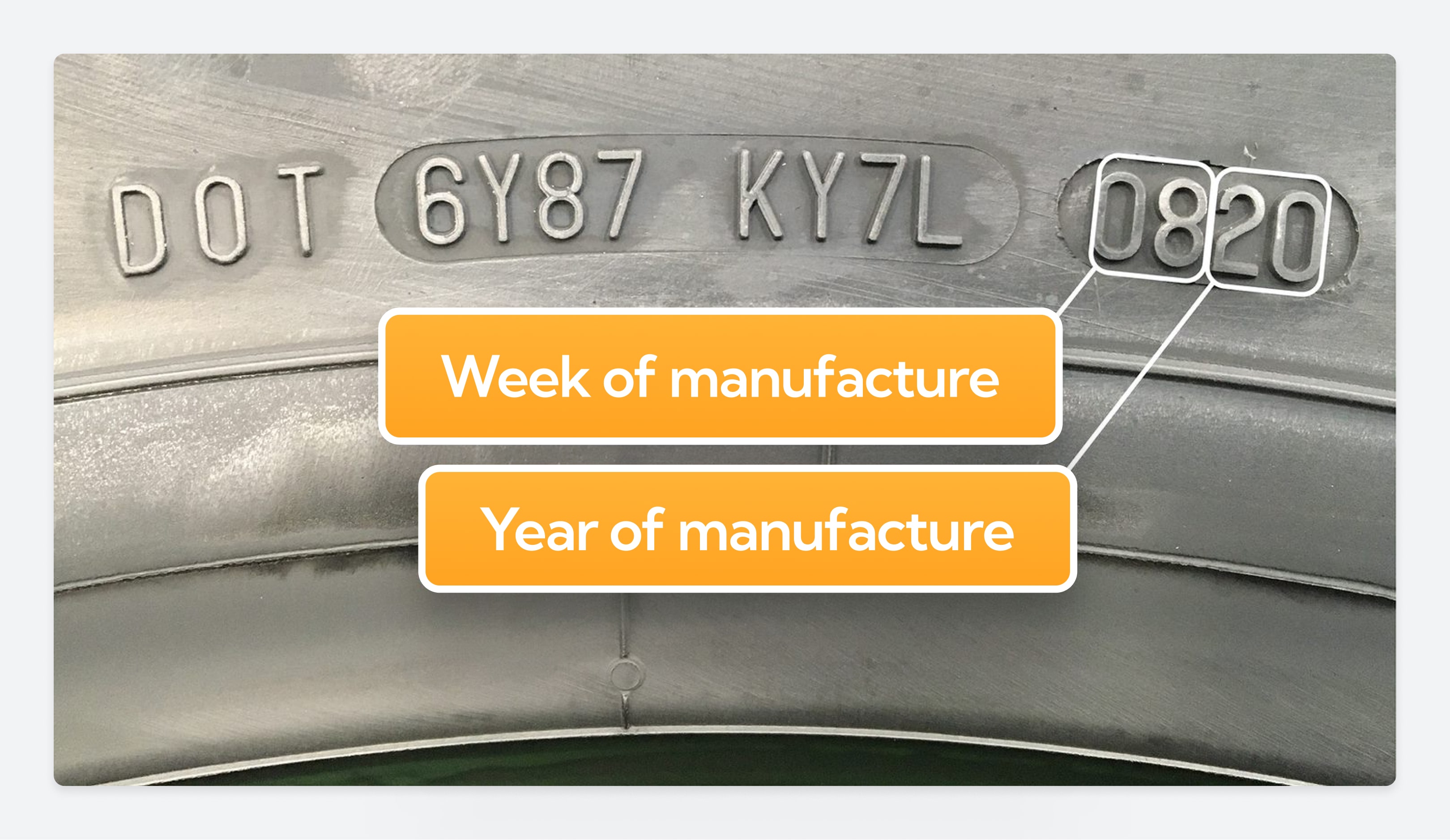Trade to trade car marketplace


Trade-only marketplace
Flexible selling options
Maximise your profits
Low mileage might seem like a safe bet, but when it comes to older cars, it’s sometimes misleading. From worn-out rubber parts to hidden corrosion, age takes its toll. This guide breaks down the real risks of buying an old, low-mileage car and what to check before you commit.
Last updated: 4th August, 2025

Listen to this story
When you’re shopping around for a used car, low mileage seems like a no-brainer. Fewer miles means less wear and tear, right?
Not always.
An old car with low mileage can hide just as many problems as one that's been driven hard. In some cases, even more. Parts dry out. Seals crack. Tyres age. And without regular use, key systems start to fail silently.
This article breaks down the risks of buying an old, low-mileage car and what to check before handing over any cash.
Most buyers see low mileage and assume it means “well preserved”. But cars are meant to be driven regularly, not sit idle for years.
When a car barely moves, its components don’t get the use they need to stay in working order. Fluids settle. Batteries drain. Rubber seals and hoses dry out. Corrosion creeps into brake lines and suspension parts. The damage may not show up on a quick test drive, but it’s there, waiting to cost you later.
Even the tyres could be unsafe despite having plenty of tread. Rubber degrades with age, and old tyres can lose grip or even split at speed.
In that sense, mileage alone doesn't tell you the full story. Age, usage patterns and maintenance history matter just as much (if not more).
Lack of use can cause several issues you won’t catch until after you’ve paid for the car. The main ones include engine and transmission problems, corroded or seizing brake systems and unsafe tyres.
Engines need to run regularly to stay healthy. When they sit for long periods:
This can lead to oil leaks, poor compression, misfires, and even complete engine failure. Transmissions can also develop issues with dried seals, sticking valves, or delayed shifting due to old fluid that’s never been changed.
Brakes are especially prone to issues in underused cars. Moisture collects in the brake lines and callipers, causing:
In the worst cases, the brakes can seize entirely after being parked too long. Not something you want to find out while driving home.
Just because a tyre has good tread doesn’t mean it’s roadworthy. Tyres degrade with age even if the car hasn’t moved.
Old tyres can develop sidewall cracks, lose grip in wet conditions, and are more likely to fail under stress. Tyre rubber starts to harden after five to six years, and manufacturers recommend replacement regardless of tread.
Always check the DOT date code on the tyre sidewall to confirm the manufacturing year. If the tyres are over six years old, budget for a new set, no matter how they look.
A full MOT and service history is the best way to get peace of mind when you’re buying an older car, but you have to know exactly what to look for.
An MOT pass means the car met the minimum safety standards on the day of the test. That’s all. It doesn’t guarantee long-term reliability or prove the car has been well looked after.
Gaps between MOTs or a long period of SORN (Statutory Off Road Notification) could indicate the car sat unused (possibly without proper maintenance during that time). If it passed an MOT after being off the road, it might have only had the bare minimum work done to scrape through.
Service history is more telling. You want to see regular oil changes, fluid flushes, tyre changes and other preventive work. A car that’s been serviced annually, even with limited use, is far more trustworthy than one that's been neglected.
Mileage tampering is still a problem in the UK used car market. Clocking a car is illegal, but not uncommon. Private sellers and shady dealers might advertise “genuine low miles” without any real proof. If you later discover the mileage was faked, getting compensation can be a long and expensive fight.
Then there’s the issue of unrecorded write-offs. Some cars are damaged and repaired without ever going through insurance, meaning they don’t show up on HPI Checks. A car might have low miles because it spent years off the road after a crash.
You also need to be cautious about outstanding finance or ownership disputes. A seller without proper documentation (like a missing V5C logbook) could be trying to offload a car they don’t legally own or can’t legally sell. In these cases, you risk losing both the vehicle and your money.
Even if mileage is low, components age. Check the condition of rubber hoses, drive belts, battery terminals and tyres for signs of cracking, corrosion or hardening. If these parts haven’t been replaced in years, they could fail without warning (and replacements aren’t cheap!).
You can check a UK car’s MOT history for free:
For deeper insight, pay for an HPI check (from providers like TotalCarCheck, CarVertical, or the official HPI). This will flag:
A qualified mechanic can spot hidden issues during a full inspection, including those that don’t show up on a quick test drive. For around £150, you get peace of mind that the engine, gearbox, brakes, suspension and electrics are in good shape. It might just save you from a £2,000+ repair bill a few weeks after buying.
Low mileage can absolutely be a plus, especially on a standard car that’s around 3 to 6 years old. In those cases, it usually means:
You’re getting a car that’s been used lightly during its prime years, which points to better condition overall and fewer problems down the line.
But you have to look at the context, too. A car that’s driven a couple of times a week and regularly serviced? Great. A car that’s been sitting in a garage untouched for five years? Not so much.
The sweet spot is low mileage with full service history and consistent MOT records. That usually signals a car that’s been lightly used but still properly maintained, which is exactly what you want.
No, not always.
While low mileage can mean less wear, it doesn’t automatically make a car the better choice. What matters more is how the car was driven, how often it was used and how well it was maintained.
A car with 30,000 miles that sat idle for years and skipped services might be a bigger liability than one with 80,000 miles that was driven regularly and looked after properly.
Low mileage can also inflate the price (sometimes unfairly if the car’s older than 6 or 7 years). You might end up paying more for a car that’s going to develop age- and maintenance-related faults.
Award-winning CEO driving growth and social impact across automotive, recycling, and technology-led enterprise platforms.
We see far too many buyers focus on mileage without looking at the bigger picture. A 10-year-old car with 20,000 miles sounds GREAT until you find out it’s on the original tyres, original fluids, and hasn’t seen a mechanic in years. Always ask how the car’s been used, not just how far it’s gone.”
According to the most recent MOT data, the average UK car covered 6,551 miles per year. So when you’re assessing mileage, that’s your baseline. Anything significantly below the yearly average (adjusted for the car’s age) is considered low-mileage.
A car that’s five years old with under 25,000 miles? That’s low mileage. A ten-year-old car with just 40,000 on the clock? Also low.
Once a week can be enough to keep a car healthy if those drives are long enough to warm the engine fully and charge the battery.
Quick five-minute trips to the shops? Not ideal. They can cause condensation build-up in the engine and exhaust, and lead to carbon deposits over time.
What really matters is:
If the car was driven once a week for 20 to 30 minutes, kept in good condition, and serviced annually, it’s probably fine. But if it’s only done short trips and missed services, you’re most likely looking at future mechanical issues.
No. Absolutely not.
Tyres degrade over time, even if they look brand-new. The rubber hardens, sidewalls crack and internal structures weaken. Most manufacturers recommend replacing tyres every 6 years, regardless of tread depth. By 10 years, they’re considered unsafe no matter what.

When you’re buying an old car with low mileage, always check the DOT date code stamped on the tyre sidewall. If the tyres are more than 6 years old, replace them immediately.
Sketchy sellers all across the UK still try to illegally roll back a car’s mileage in an effort to fetch a higher selling price for it.
To spot this:
Mileage has nothing to do with MOT standards. A car can have low mileage and still fail for:
In fact, cars that sit unused for long periods are more likely to fail due to age-related problems.
A full service history is important no matter what kind of car you’re buying. With an old, low-mileage car, you can’t rely on mileage alone to judge condition. The service history tells you how well the car’s been cared for over time, regardless of how far it’s been driven.
You want to see:
A missing service history means the car was neglected.
It depends mainly on the auction house.
Reputable auction platforms like Trader.co.uk or BCA list accurate mileage pulled from MOT and service records. They also provide full vehicle condition reports and flag any major issues up front. But “buyer beware” still applies — you’re usually buying as seen, with no legal comeback if things go wrong.
Smaller or unregulated auctions, especially those through online-only platforms and salvage dealers, are riskier. Some listings include vague or misleading mileage claims, and you won’t always get a chance to inspect the car properly before bidding.
To protect yourself:
If you know what you're doing as an experienced auto trader, auctions are a great way to grab a deal. But for the average buyer, they're a gamble, especially if low mileage is the main selling point on an old car.
Your rights depend on who you bought the car from.
You’re protected under the Consumer Rights Act 2015. If the car is faulty or not as described, you can:
Make sure to document everything: emails, receipts, MOT history and diagnostic reports (if they exist).
You have far fewer rights. The car only has to be:
If the seller lied about the mileage or condition, you may have a claim for misrepresentation, but you'll need legal help to get anything out of it. On top of that, it’ll almost definitely be a slow, uphill process.
In most cases, you're buying “sold as seen” with no warranty. Unless the auction house misrepresented the car in writing, you’re unlikely to have legal recourse. And limited warranties on auction vehicles are generally limited to newer and certified pre-owned cars.
Low mileage sounds like a win (and it sometimes is), but it’s no guarantee of quality.
Old, low-mileage cars hide serious mechanical issues if they’ve been barely used or poorly maintained. A clean MOT and a low number on the dash mean nothing without proper service records and a thorough inspection.
This is why we recommend looking into the full vehicle history and paying close attention to the condition the car’s in as opposed to just going off the mileage.
Look beyond the numbers. Check the MOT history. Ask for receipts. Inspect wear-and-tear. And definitely get a professional inspection before you buy.

